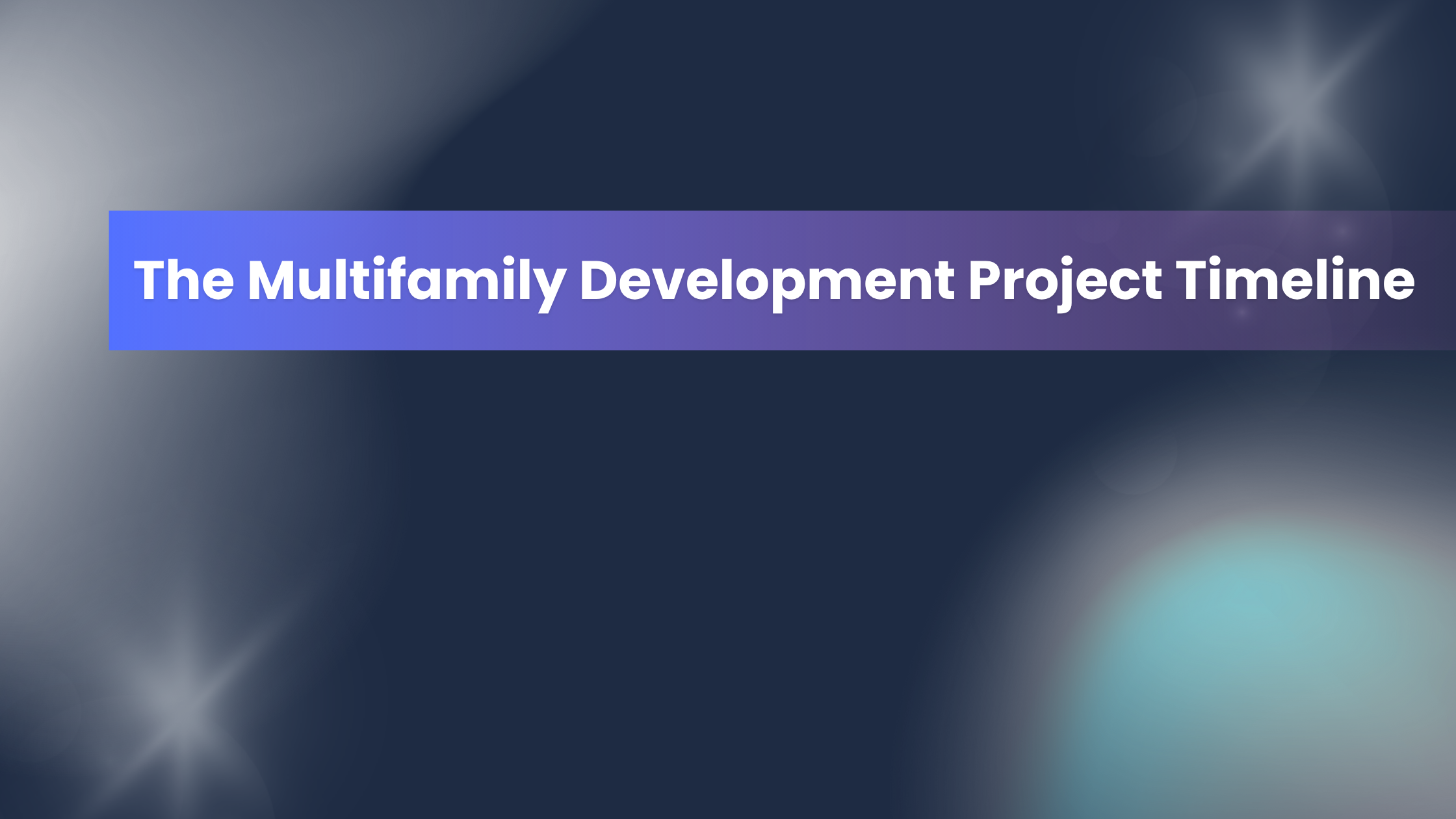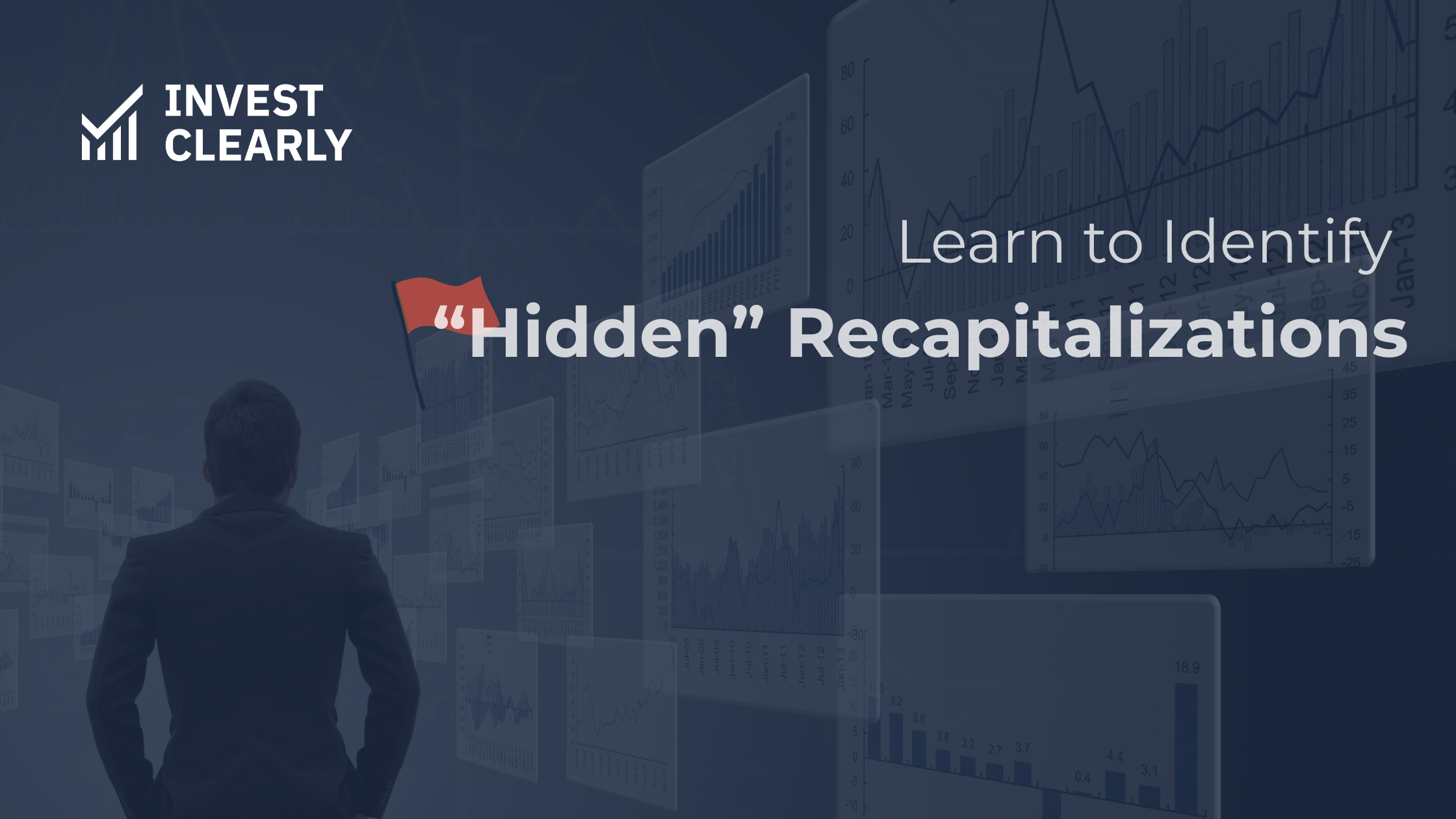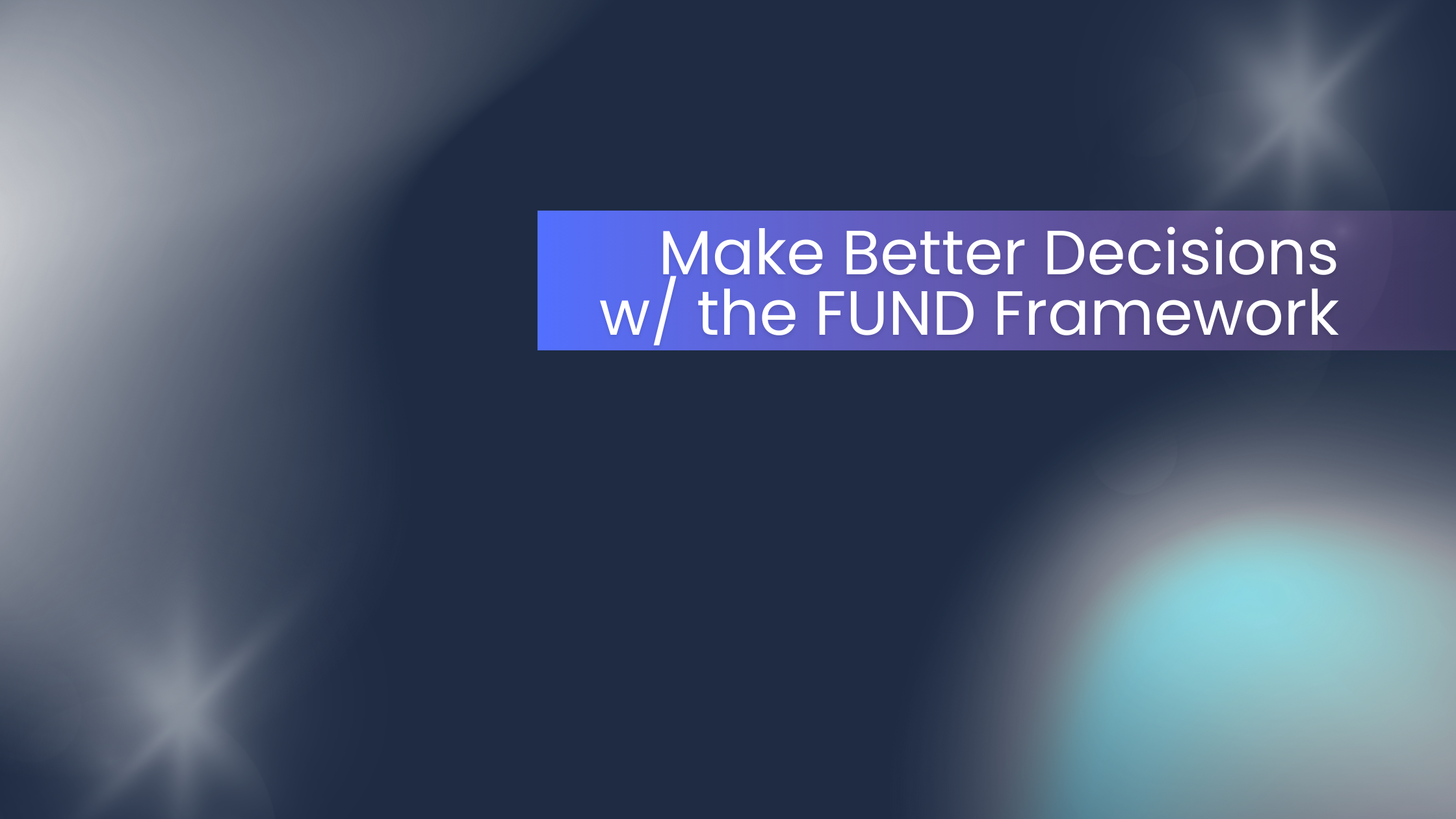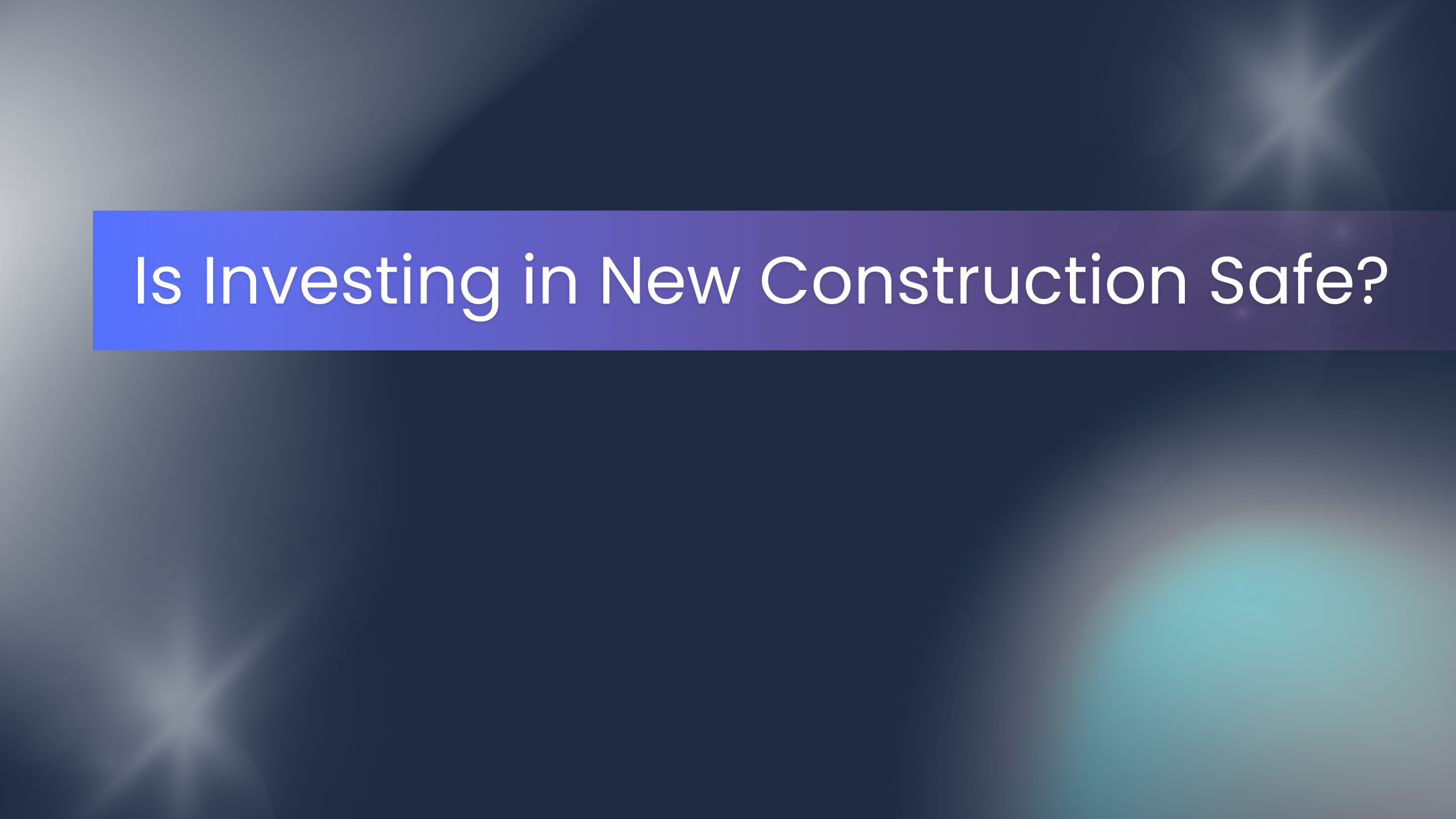
From Land to Lease-Up: The Lifecycle of a Multifamily Development Deal for LPs
Never miss an Invest Clearly Insights article
Subscribe to our newsletter today
As a passive investor in multifamily real estate, you are joining a journey that transforms land into a thriving apartment community. Between your initial investment and the day you begin receiving distributions, there are several important stages. Understanding these stages helps you set clear expectations and see how value is created step by step.
This guide walks you through the typical timeline of a multifamily development project from the limited partner’s (LP) perspective. You’ll learn when investors come on board, what happens during construction and lease-up, and how profits are realized at exit.
The Beginning
The earliest stages of a multifamily development project include site selection, due diligence, entitlements, and city approvals, which are handled entirely by the developer and their team. This process could take several months or even years to complete. Investors are typically not involved in this process.
By the time passive investors are given the opportunity to invest, usually the land is secured, permits are in place, financing is ready, and the project is ready to move forward to an official closing.
This structure reduces risk for passive investors. Capital is only raised once the project has cleared major hurdles and is positioned for construction and financing. Investors should always confirm these key items are in place before committing capital, or at least understand exactly where the developer stands in the process.
.png)
Investor Notification
When a project is ready, the developer will notify their investor network. At this stage, you receive an offering package that includes details such as:
- Project location and scope
- Financial projections and return targets
- Timeline from closing through exit
- Date of the investor presentation or webinar
This is your opportunity to review the details, ask questions, and decide whether to participate.
Pre-Closing Period (1–3 Months)
After notification, there is a period before the project officially closes. This typically lasts one to three months. During this time, the developer or sponsor is arranging bank financing, coordinating third-party companies like their civil engineer and architects, and preparing for construction to start.
For investors, this is when capital commitments are confirmed and funds are wired. Investments are usually accepted on a first-come, first-served basis.
Construction Phase (12–24 Months)
Once closing occurs, construction begins. This phase often takes one to two years, depending on the size of the project. Major milestones include:
- Site preparation and infrastructure
- Foundation and structural framing
- Mechanical, electrical, and plumbing installation
- Interior build-outs and finishes
- Landscaping and amenities
During construction, most developers provide regular updates, typically monthly or quarterly. These investor updates include pictures, construction progress, budget tracking, and anticipated timelines.
Leasing and Stabilization (6–12 Months)
As construction wraps up, the focus shifts to leasing. A property management team begins marketing, pre-leasing, and moving in residents. Stabilization is reached when the property maintains an occupancy level around 90% - 95%. How long an asset takes to stabilize generally depends on the local rental market.
This is the point where the property transitions from a construction project to an income-producing investment. For passive investors, stabilization is often when distributions begin, as the property generates consistent rental income.
.png)
Refinance or Sale (12–24 Months After Completion)
Once stabilized, the developer evaluates the best exit strategy based on market conditions. Options typically include:
- Refinance: The property is refinanced with permanent debt. In these situations, it is possible that some investor capital is returned, and quarterly distributions continue.
- Sale: The property is sold, and investors receive their share of profits.
Either path provides liquidity to investors and helps deliver the projected returns.
Development Overview for Passive Investors
A multifamily development deal follows a clear sequence of steps. Here’s what you can expect as a limited partner (LP):
- Investor Notification: You’ll be invited to participate once the developer has land secured, permits approved, and is ready to move forward.
- Pre-Closing (1–3 Months): Time to review the offering, make a decision, and fund your investment while the sponsor finalizes financing.
- Construction (12–24 Months): The property is built from the ground up. You’ll receive consistent progress updates during this phase. If the developer offers their investors a preferred return, limited partners accrue this pref during the construction period.
- Lease-Up and Stabilization (6–12 Months): Residents move in, occupancy reaches 90–95%, and cash distributions are usually paid out to investors at this time.
- Refinance or Sale (12–24 Months After Completion): The project is either refinanced to return capital or sold to realize profits.
Your Role As A Limited Partner
As a limited partner, your role is simple and completely hands off. Once you make your initial investment, you become a true partner in the deal without managing contractors, dealing with tenants, or handling bookkeeping.
You can expect regular project updates, a Schedule K-1 form each Q1 for tax reporting, and access to the developer for any questions. Some developers invite investors to exciting milestone events like the official groundbreaking or ribbon-cutting ceremonies.
Your involvement is limited to monitoring progress, while the development team manages the project from start to finish.
FAQs
How long is my money tied up in a multifamily development investment?
Most development deals, including the construction period, last three to five years, depending on the project size and market conditions.
Do I receive distributions during construction?
Typically no. Distributions usually begin after the property stabilizes and generates consistent rental income. However, if the developer offers their investors a preferred return, investors will accrue their preferred return starting at closing.
Why don’t investors fund the early stages of a project?
Typically, developers cover initial due diligence and entitlement costs with their own capital to reduce risk for LPs. Investors come on board once the project is fully approved and ready. However, each company is different and limited partners should verify where in the process the developer is before investing.
How are returns typically structured?
Returns and partnership structures in development projects are similar to regular syndications. Profits are calculated based on the waterfall structure outlined in the offering documents and usually based on preferred returns, IRR targets, and equity multiples.
Conclusion
The lifecycle of a multifamily development investment follows a clear path from investor notification when the project is available to eventual refinance or sale. While the process takes time, each stage builds value and moves the project closer to producing returns. By understanding this journey, passive investors can set realistic expectations, stay informed, and fully appreciate the value creation that drives their long-term results.
About Goodin Development
Goodin Development, founded by Justin Goodin, builds luxury mixed-use multifamily communities across Indiana. Goodin Development helps busy families build wealth in real estate, without the added stress and responsibilities that come with being a landlord.
Written by
Justin GoodinJustin Goodin is the founder of Goodin Development, a company that builds luxury mixed-use communities across Indiana. Born and raised in Indianapolis, Indiana, Justin earned a bachelor's degree in finance and spent years working as a multifamily underwriter for a bank, before starting his own development company. Today, Goodin Development helps busy families build wealth in real estate, without the added stress and responsibilities that come with being a landlord.
Read Our ReviewsOther Articles

Real Estate Recapitalizations—What Passive Investors Need to Know
A recapitalization is a restructuring of a property's capital stack (the mix of debt and equity that finances an investment). While they can be legitimate business strategies, transparency can be an issue.

How to Evaluate a Potential Investment Using the FUND Framework
The FUND framework is a simple way to evaluate opportunities by looking at four pillars: Financials, Underlying Assets, Notable Differentiator, and Delegation of Responsibilities.

What Needs to “Die” in Passive Investing – According to Guests of The Invest Clearly Podcast
Get the answer to the closeout questions of each podcast episode: “What do you think needs to die in passive investing?” The answers are wide-ranging, from misconceptions about risk, to misleading marketing tactics, to structural issues in how deals are presented.

Passive Real Estate Investing Advice from Experienced LP Investors
Experienced LPs shared their most valuable lessons, drawn from years of investing across various asset classes and sponsor relationships.

How to Spot Red Flags in Private Real Estate Deals: 10 Risks Every Investor Should Know
The SEC reported that investment scams cost Americans more than $5.7 billion in 2024, with many cases tied to private offerings (like real estate syndications) lacking oversight. Here are ten critical red flags every investor should be able to identify before committing funds to a real estate deal.

How Developers Mitigate Construction Risk to Protect Investors
Investing in multifamily development through a real estate syndication can be highly rewarding, but many passive investors wonder: What about construction risk? Delays, cost overruns, or unforeseen site conditions can feel intimidating if you’re new to the space.